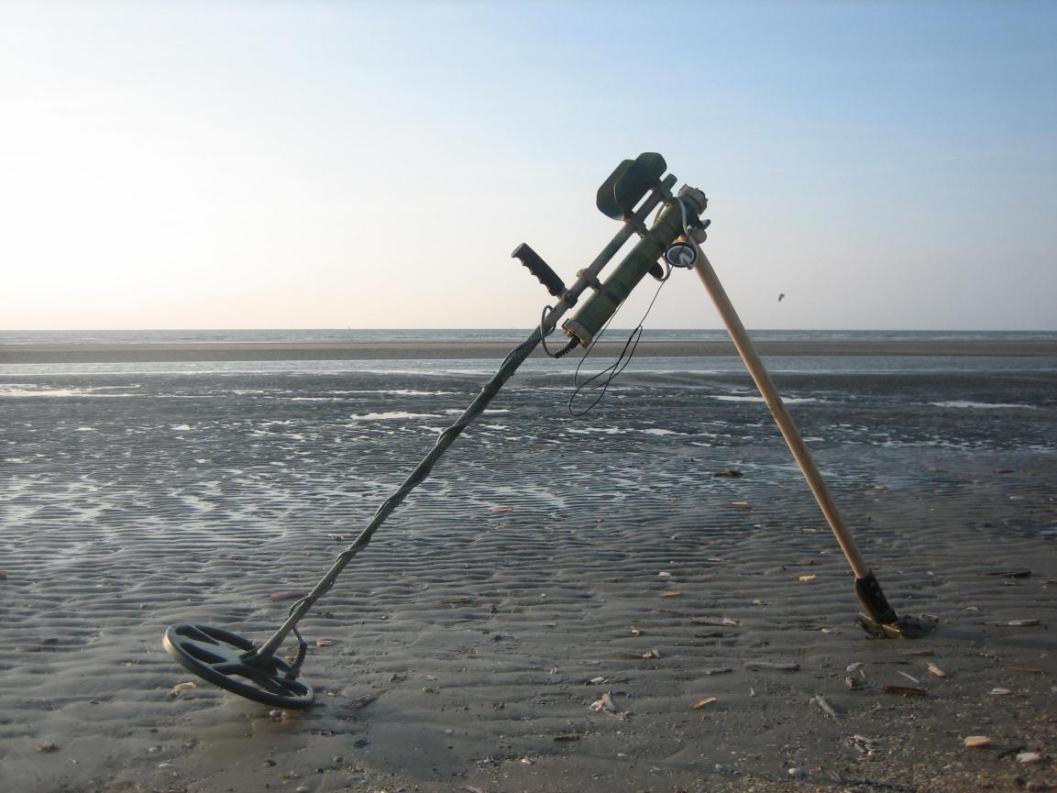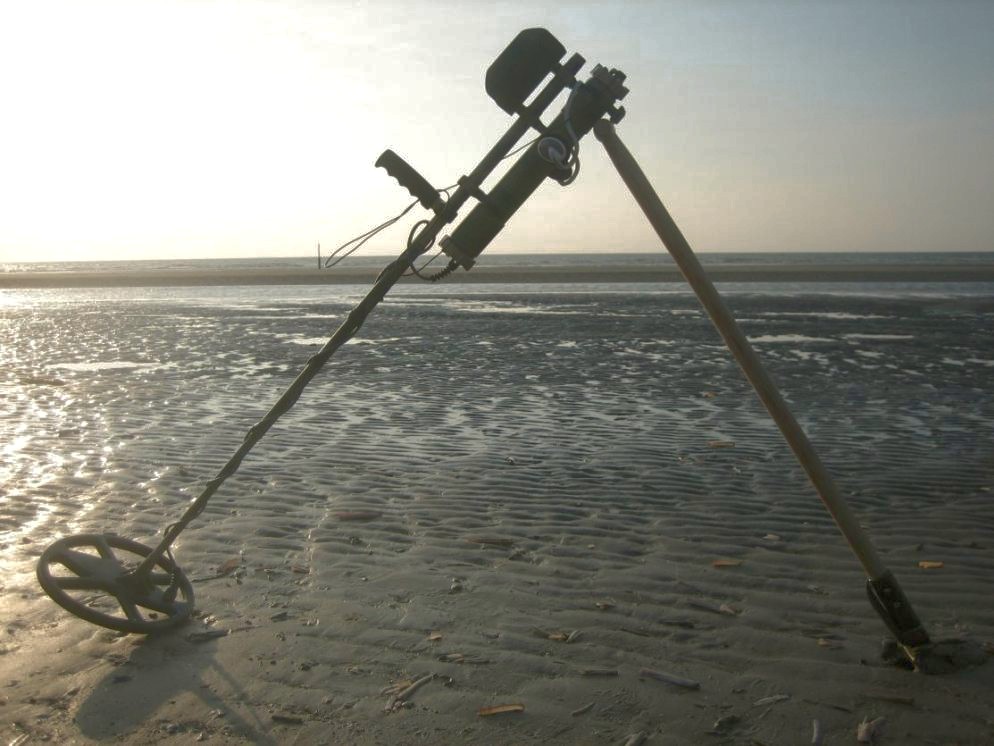
|
Coils
|

|
As with most pulse induction detectors, the PICKINI detector uses a single monoloop coil.
The coil inductance should be between 200 and 500 microHenry.
The easiest coil to build is a basic round bundle coil
Just hit a number of nails in a circular pattern into a plank and wind the coil wire around it in a bundle.
Typically: 20 cm diameter and 27 turns will make a nice and small coil suitable for hunting smaller objects like coins.
Here, a preformed coil shell was used. Diameter: 26 cm -- 20 turns coil.
Wind the coil and tighten the windings with kite string and super glue.
Put a layer of electrical insulation tape all around it.
For shielding, 3M adhesive copper tape was used. Wind it all around, leaving a gap of about 1 cm.
DO NOT SHORT CIRCUIT THE SHIELDING -- THE GAP IS IMPORTANT!
The shielding wire is soldered to the copper tape.
Lastly, put another layer of electrical tape all around it.
The finished coil is placed in the shell and measured: 324 microHenry .
The remaining cavity of the coil shell is then filled with Rubson "filler foam" to ensure that the coil
will not be to heavy when cast with 2 component resin .
When the coil winding and shielding is finished it can be cast in a two component resin.
A shielded cable, like e.g. a USB cable or STP cat 5/6/7 can be used to attach the coil to the board.
A fitting carbon fiber lower stem is used to attach the coil to the rest of the stem.
| Dimension | Shape | #Turns |
|---|
| Ø 120 mm | round | 36 |
| Ø 150 mm | round | 31 |
| Ø 175 mm | round | 28 |
| Ø 200 mm | round | 26 |
| Ø 250 mm | round | 22 |
| Ø 300 mm | round | 20 |
| Ø 400 mm | round | 17 |
| Ø 500 mm | round | 15 |
| 1m x 1m | square | 10 |
| 1.4m x 1.4m | square | 8 |
| 1.8m x 1.8m | square | 7 |
PICKINI home